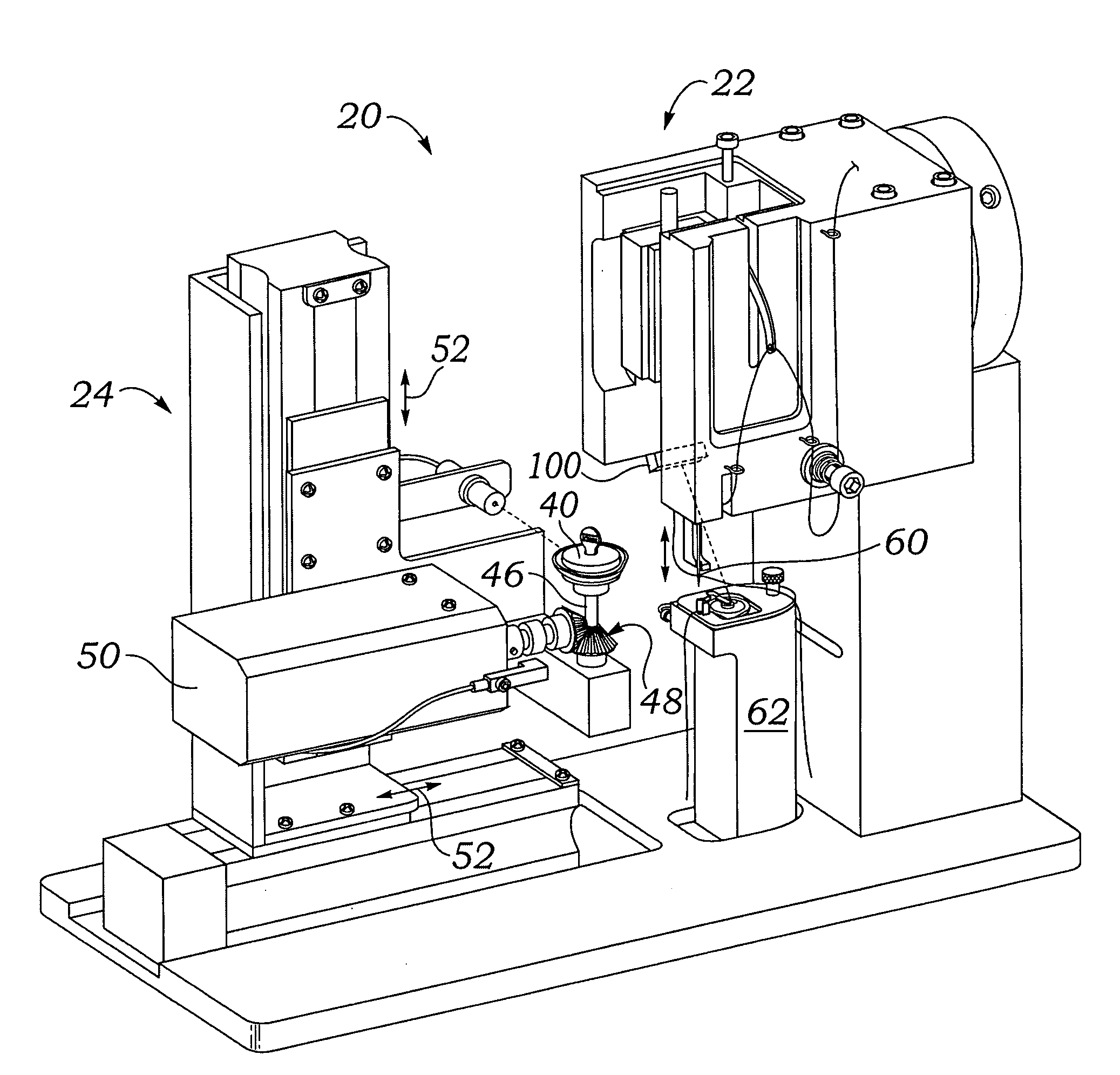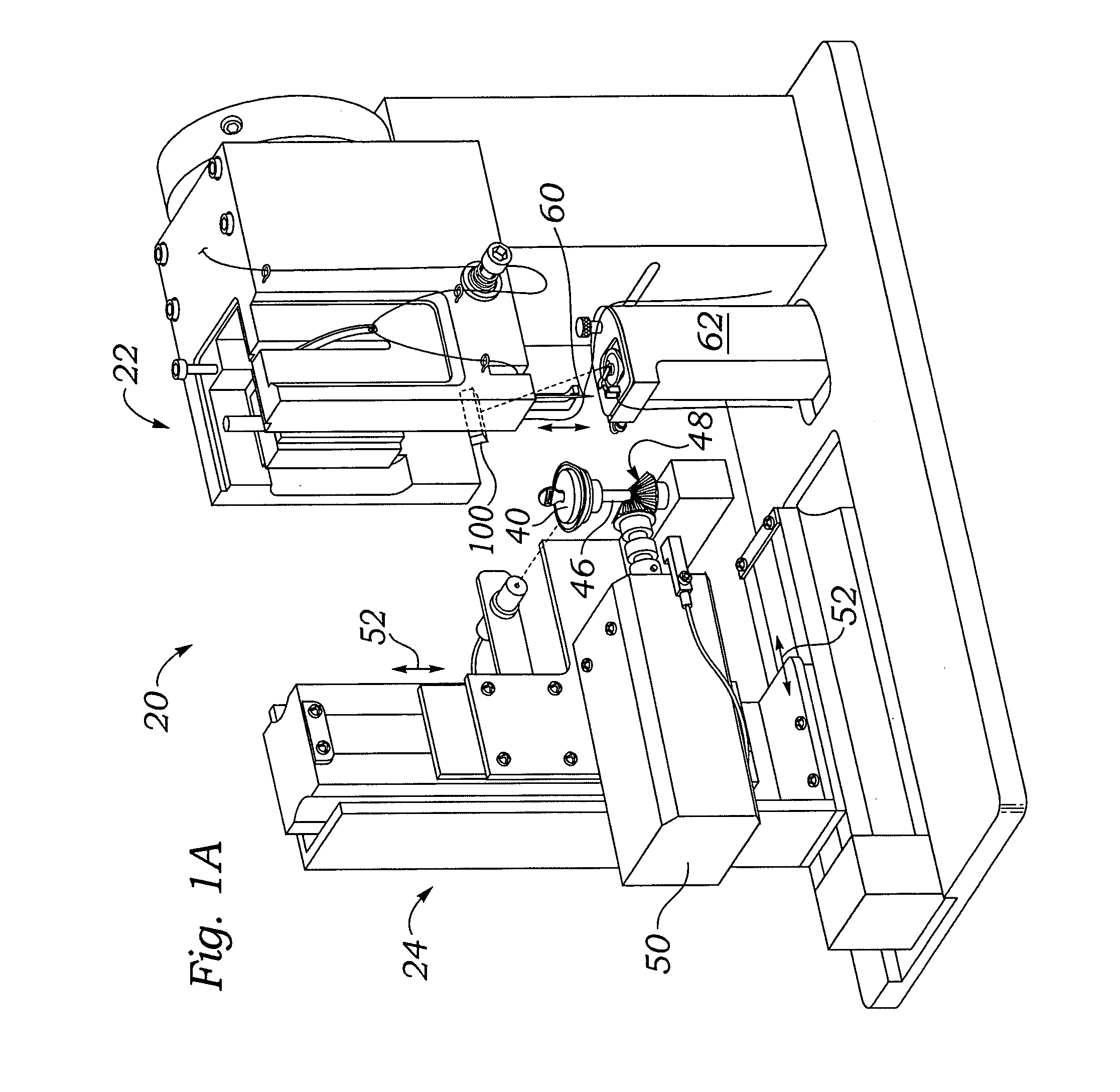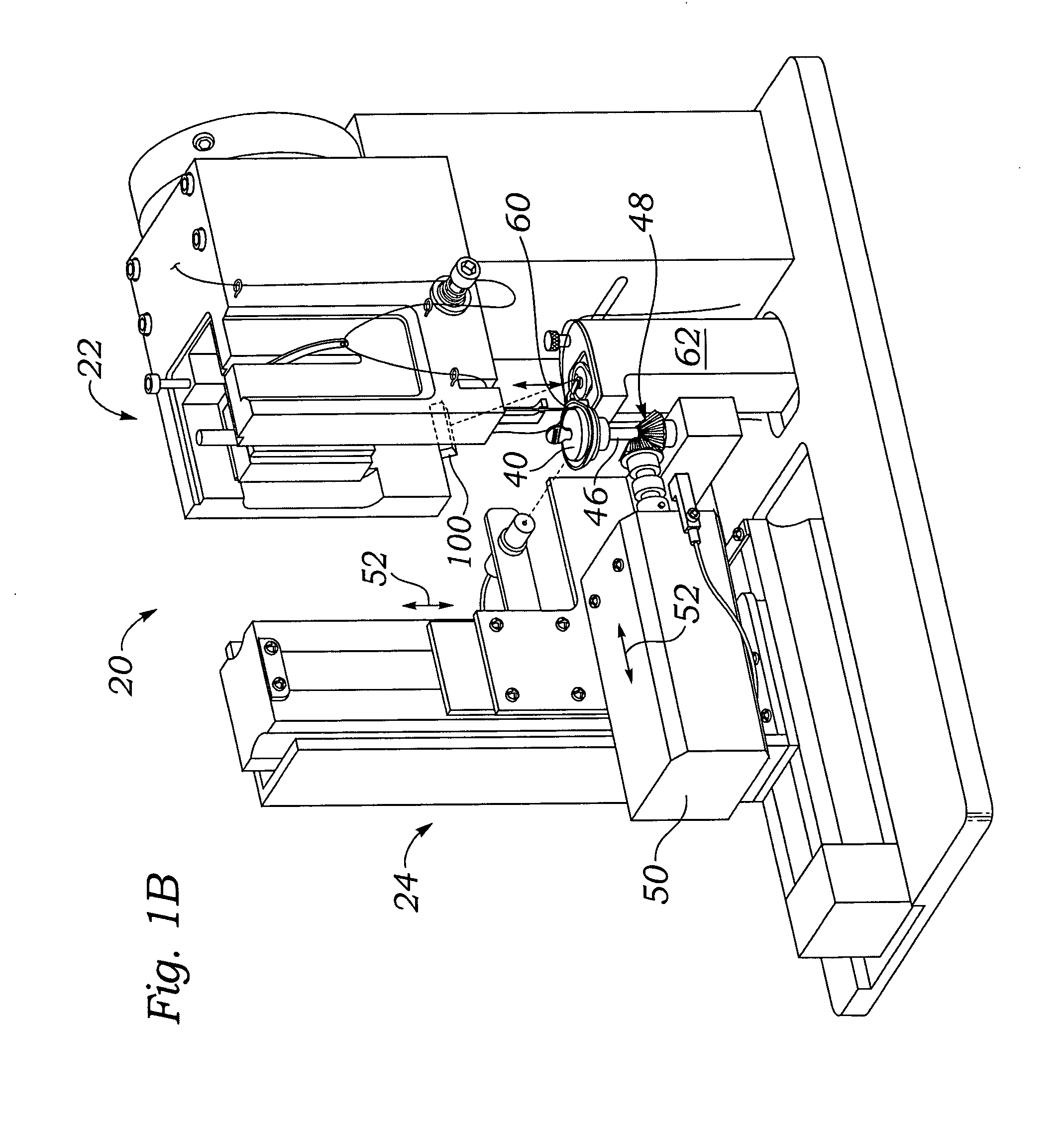Automated surgical implant sewing system and method
a surgical implant and sewing system technology, applied in the field of medical devices, can solve the problems of increasing the cost of valve making, labor-intensive and time-consuming, and requiring considerable effort and precision, and achieve the effects of facilitating the capture of the valve, increasing yield, and facilitating the captur
- Summary
- Abstract
- Description
- Claims
- Application Information
AI Technical Summary
Benefits of technology
Problems solved by technology
Method used
Image
Examples
Embodiment Construction
[0025]The present invention provides a system for automating one or more steps of a prosthetic heart valve fabrication procedure. The steps of the procedure illustrated and described involve sewing a tubular piece of fabric around a support structure of the prosthetic heart valve, typically a support stent. It should be understood by those of skill in the art that the illustrated support stent is only exemplary, and the present invention can be used to cover various support stents or structures. Furthermore, various aspects of the present invention may be used in other steps of a heart valve fabrication process. For example, mechanisms similar to those shown and described may be used to cover other parts of a prosthetic heart valve with fabric. Up to now, prosthetic heart valve assembly has been an almost entirely manual, labor-intensive process. The present invention therefore represents a pioneering effort to automate at least some of the process of assembling heart valves.
[0026]T...
PUM
 Login to View More
Login to View More Abstract
Description
Claims
Application Information
 Login to View More
Login to View More - R&D
- Intellectual Property
- Life Sciences
- Materials
- Tech Scout
- Unparalleled Data Quality
- Higher Quality Content
- 60% Fewer Hallucinations
Browse by: Latest US Patents, China's latest patents, Technical Efficacy Thesaurus, Application Domain, Technology Topic, Popular Technical Reports.
© 2025 PatSnap. All rights reserved.Legal|Privacy policy|Modern Slavery Act Transparency Statement|Sitemap|About US| Contact US: help@patsnap.com



